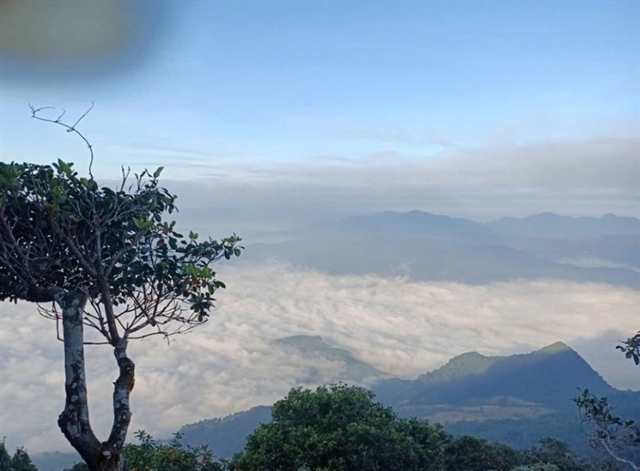 Travel
Travel

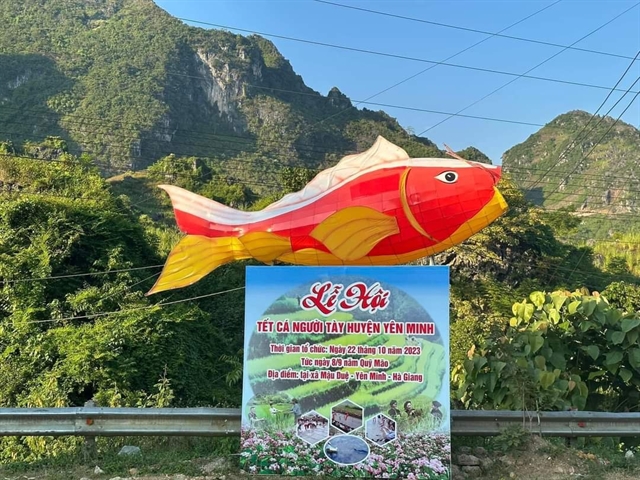 |
| KOI PARTY: The Fish Festival of Tày people in Mậu Duệ Commune, Yên Minh District of Hà Giang Province. — Photo courtesy of Yên Minh Office |
Nguyễn Mỹ Hà
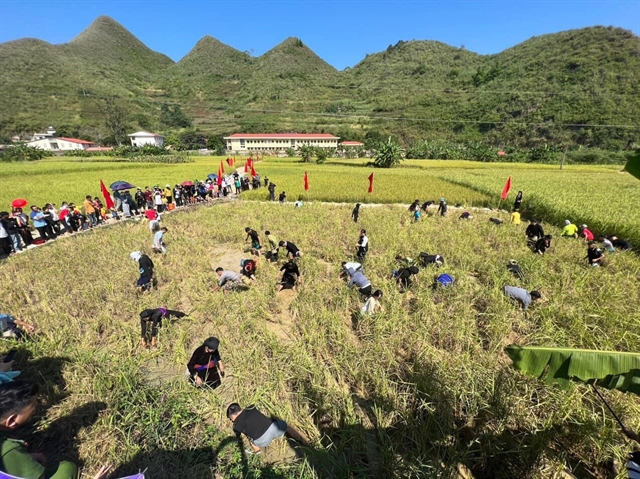 |
| FIELD FISHING: People catch small carp living in rice paddies, a tradition the Tày people in Mậu Duệ Commune have continued for generations. — VNS Photo Duy Tuấn |
The Fish Festival of the Tày people living in Yên Minh District of Hà Giang Province takes place every year on the 9th day of the 9th lunar month. On October 23, 2023, a big series of events drew people from all other ethnicities to Mậu Duệ Commune to share in a ritual to thank Mother Nature for this year’s harvest and hope for a bumper crop next year.
The Fish Festival of the Tày people in Yên Minh was recognised as a National Intangible Cultural Heritage in 2016, and has been celebrated every year since.
On the day of the festival, people in Yên Minh wake up early and prepare dishes from rice paddy fish to offer them on the ancestors’ altar, praying for good weather in the upcoming year and ushering in a good harvest.
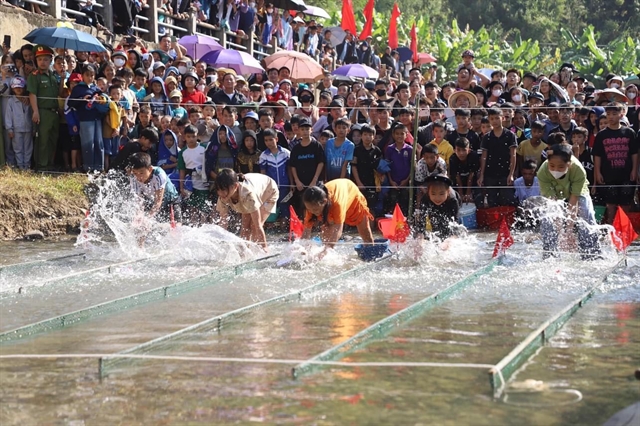 |
| FISHING FUN: The fish catching competition draws crowds. — VNS Photo Duy Tuấn |
This year, Yên Minh District has expanded the Fish Festival to a large scale, with a series of activities including a fish race, a competition catching fish by hand on the rice paddy fields, fish roasting competition, and making sticky rice buns with fish dumplings. Last but not least, the distilling of corn alcohol with local leaf fermentation adds the final factor to the list of activities, as no festival in the mountains can be complete without corn liquor, the local signature drink.
All Tày families grow rice on their paddy fields and also raise small carp on their fields. When the rice is ripe for harvesting, water from the fields is drained so that they can more easily catch fish for the Fish Tết and bring the strongest fish to the race.
The fish race was most fun for children, who brought their family’s fish and made them swim fast to win the top three titles.
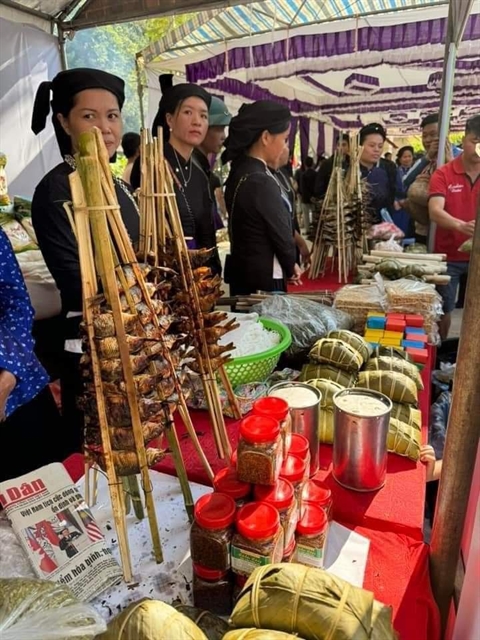 |
| JUST GRILLED: Fish fresh-caught from a rice paddy are roasted on bamboo sticks. When finished, they are very crispy and tasty, and the bones are easily chewed. — Photo courtesy of Yên Minh Office |
Having the small carp fish fried or roasted in Hà Giang can be an unforgettable memory for visitors. But hearing about Việt Nam’s national dish, bánh chưng, made with fish filling, will be new to many, including yours truly.
Bánh chưng, the square glutinous rice dumpling with pork and mung bean filling has been closely associated with the legend of Prince Lang Liêu, the 18th son of Hùng King. To make a long legend short, despite bearing the King’s royal blood, Prince Lang Liêu lived a modest life with his mother. Responding to the request to offer his father the best condiment he could find, hunt or catch, the prince offered a masterpiece of cuisine, with rice as the vital source of nutrition, pork and mung bean stuffing representing the flora and fauna, and all carefully wrapped in a green leaf to represent the forest. This dish won top prize at the competition, as well as the heart of the Father Hùng King.
Tày people also have their bánh chưng with pork stuffing, and black bánh chưng with rice dyed in wood charcoal. For the fish stuffing, it’s a way of Tày people to thank the Gods for having the fish to feed their rice in the full cycle of agriculture practices. The fish, marinated with ginger juice and when cooked, exudes a very warm fragrance and tastes delicious.
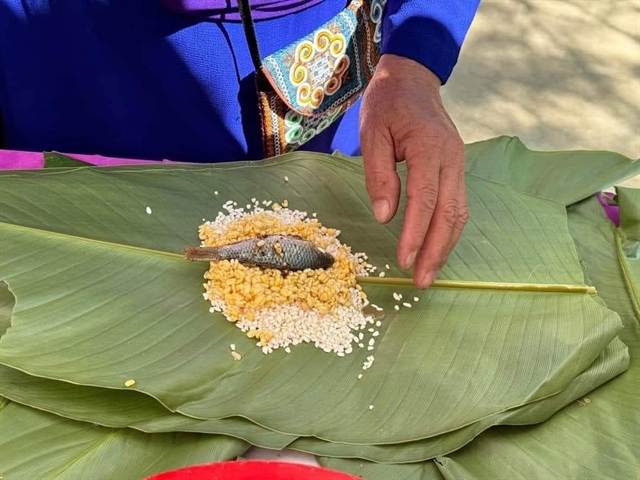 |
| FISH-STUFFED: Making sticky rice cake by the Tày with a fish as the filling. — Photo courtesy of Yên Minh Office |
Tày mothers demonstrate how they make their bánh chưng to many visitors to the Buckwheat Festival on the Limestone Karst Plateau Geopark of Hà Giang, which follow soon after the Fish Tết. Autumn is the best time to visit the mountains. Tày women wear their long black and indigo tunics, very simple yet with striking colours when they don their silver jewellery.
The Tày people used to live in small hamlets with only 10 to 20 stilt houses perched on the lower part of the mountains in Cao Bằng, Bắc Kạn, Lào Cai or Thái Nguyên provinces. Their language belongs to the Tày – Thai group and the script was recorded on a Latin alphabet in the 1960s.
They worship ancestors, the House God, Kitchen Gods and Maternity God.
Tày women and men’s costumes are made from cotton with no embroidery, and the colours are quite monotonous compared to other more colourful embroidery of the Dao or Mông.
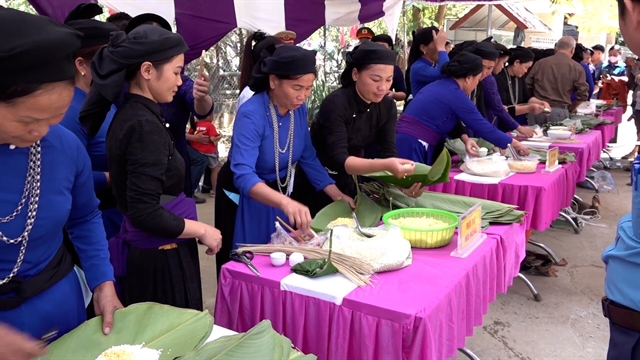 |
| BLACK AND INDIGO: Tày ladies in their signature black and indigo áo dài tunics present their traditional fish bánh chưng for the Fish Tết. — Photo courtesy of Yên Minh Office |
Their houses are made of bamboo with roofs of palm leaves. Today, to make their houses more durable, with cement posts replacing hardwood, but the rest of the houses are still made with products from the forest.
This Fish Festival in Mậu Duệ hamlet features the Tày's culinary heritage. But it would be a mistake, when writing about Tày people, not to mention the most significant musical instrument: the đàn tính, in Tày language, tính tẩu, a gourd lute.
This zither has a long graceful neck, with two strings that are plucked by hand. Just last month, a group of one thousand Tày ladies playing đàn tính together against the magnificent background of Bản Giốc Waterfall in Cao Bằng Province was recorded in the Việt Nam Book of Records as the largest event where people played đàn tính at the same time. — VNS